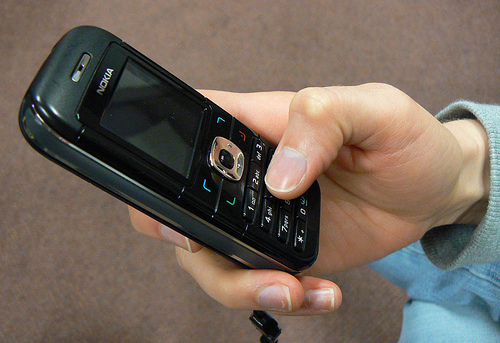A fatal mass exodus has gripped southern India as residents flee in response to images and messages of impending attacks. The problem is the pictures are faked and false rumors of impending doom are being circulated through SMS. “Morphed pictures, false messages were used to provocate people and trigger panic,” Indian Home Secretary R.K. Singh told reporters. “A total of 76 websites were identified where morphed images were uploaded, and the bulk of these were uploaded in Pakistan.” A ban on bulk texting had attempted to stem earlier threats as officials assured residents of their safety, but this cheap new form of terrorism is overwhelming.
The unknown source of the Indian rumors exploited recent sectarian violence in the northeastern city of Assam that have left 75 dead and 300,000 stranded in shelters. Northeastern migrants, many of whom had recently moved to the south to find work, were supposedly threatened by retaliatory attacks if they did not return home. “We have seen the messages on our phones and on the internet. It is not safe to stay here, we are safer at home,” said one student.
Panicked stampedes have already claimed the the lives of two and injured 9 others after fearful residents pushed victims from a moving train. Indian authorities have been shuttering websites and social media accounts like a game of whack-a-mole, but it’s difficult to see how they can keep up.
The incident underscores both the accessibility of new forms of cyber-terrorism and the tricky credibility of social media.
Having experienced SMS rumors of a deadly gunman myself as graduate student at UC Irvine, I know how powerfully credibly social media can seem. Mild panic gripped the campus in 2009 when rumors of a gunman began circulating through Facebook and SMS. UCI authorities alerted students to stay inside. Getting official reports was difficult, since the university website was crippled by incoming traffic. Facebook and Twitter, which were much better sources of real-time information, spread conflicting reports.
The university did eventually send out official emergency messages via text, but waiting 10 or 15 minutes to receive them was a disturbingly long amount of time. In the midst of (perceived) threats, we updated Facebook and Twitter by the second. Ultimately, the “gunman” was just some guy with a paintball gun, but that didn’t stop me and my students from fearfully hiding inside until well after the incident was over.
Since Twitter and Facebook are both faster sources of information and are relaying potential first-hand accounts, they’re a tempting source of credibility, especially when fear leads one to err on the side of believing the more dangerous rumors.
India is unfortunately vulnerable to prolonged rumors, but its easy to see how this new form of terrorism, combining realistic images and SMS, could cause crowds in any country to panic. The situation brings renewed urgency for Congress to start making real gains on cybersecurity legislation, which has thus far been blocked by partisan gridlock. While the the most recent bill only deals with direct cyber attacks, it’s imperative that our government be able to make steady progress on national security.
[Image Credit: Flickr User kiwanja]
